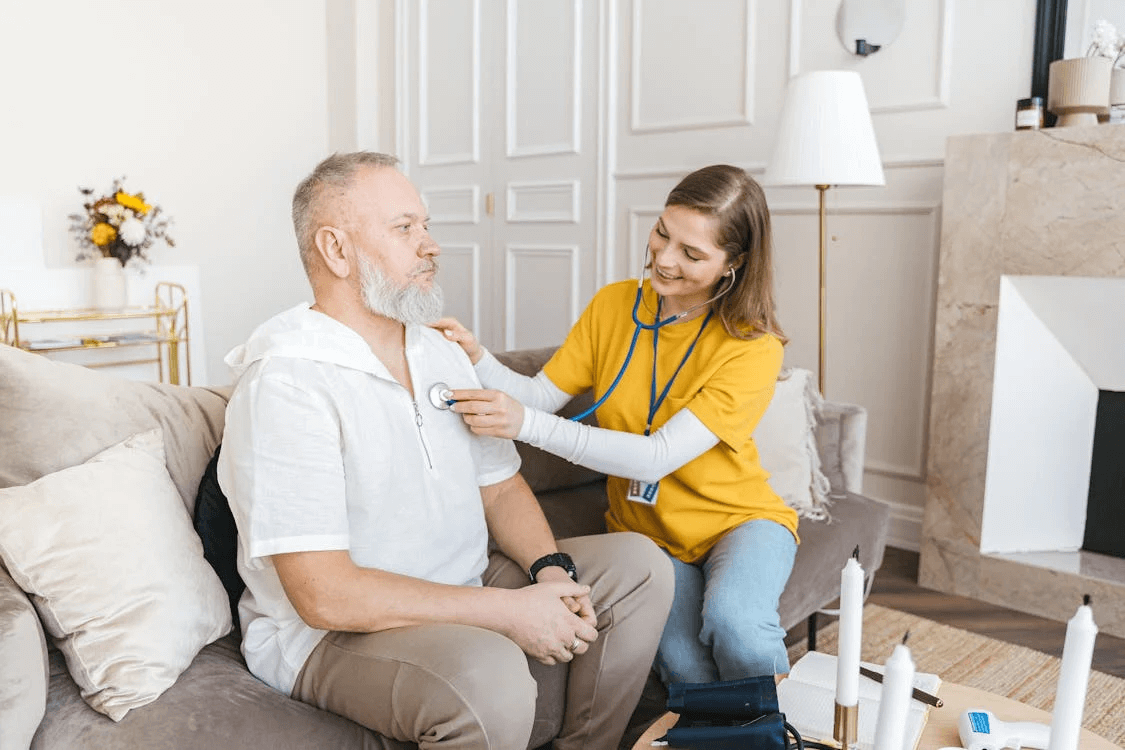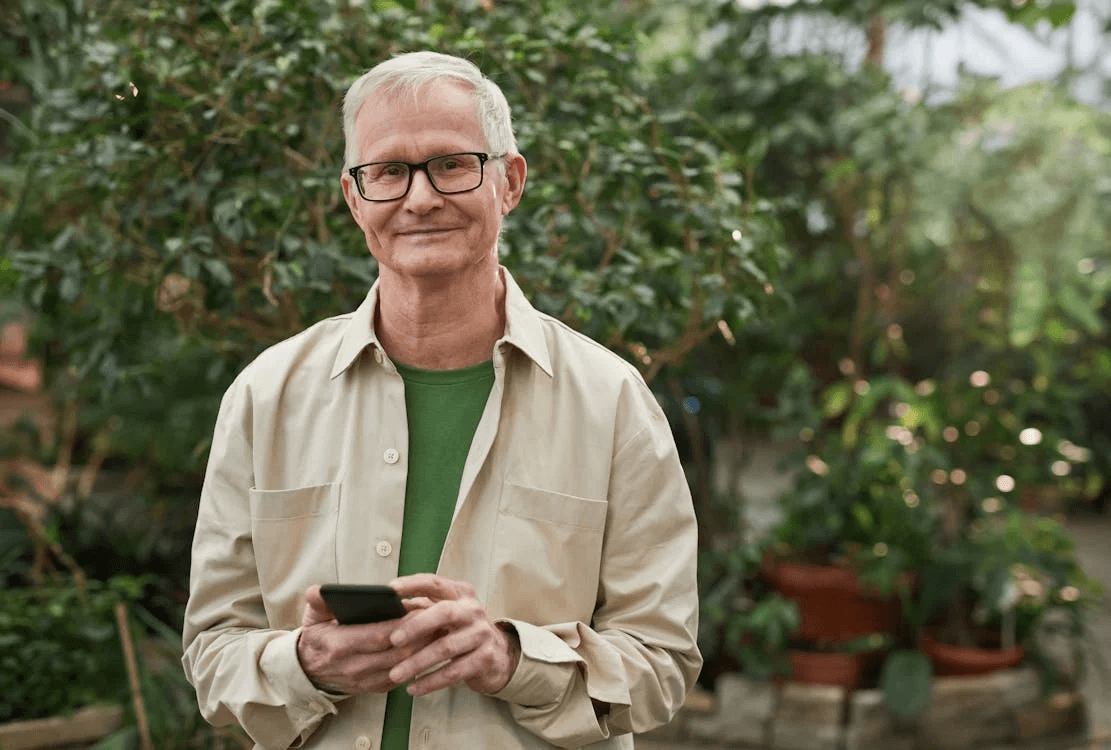Just because the hair has gone silver doesn’t mean the paintbrush gets packed away. All across the country, older artists are still chiseling marble, stretching canvas, or composing from their favorite reading chair. Art doesn’t retire—and thankfully, neither do the people who make it.
Still, creative independence doesn’t mean ignoring safety. Whether you’re a painter with a beloved home studio or a collector known for rearranging your gallery wall at 2 AM, peace of mind matters. That’s where today’s safety tools step in. A quick medical alert options overview shows how easy it is to stay secure without giving up autonomy—or aesthetics.

Photo by Antoni Shkraba Studio from Pexels
Why Creative Seniors Face Unique Safety Challenges
Artists age like wine, but their studios don’t always follow suit. Here’s why older creatives might need a little extra backup:
- Tripping hazards: Cords, canvases, stools, and sculpture stands aren’t exactly safety-certified.
- Lone working hours: Many artists prefer solitude, which means no one’s nearby if something goes wrong.
- Repetitive movements: Hours of working with hands or standing can lead to overuse injuries or fatigue-related accidents.
- Cluttered charm: Let’s face it—some creative spaces are beautiful chaos.
It’s not about fear. It’s about freedom with a fallback.
Wearable Devices That Don’t Clash with Creativity
Medical alerts used to be clunky, beige boxes with big red buttons. Not anymore. Seniors now have access to sleek, discreet devices that blend right into daily wear—or don’t look like medical gear at all.
A few standout options include:
- Pendant-style alerts: These can double as necklaces or be hidden under clothing. Some even come in minimal silver or black finishes.
- Smartwatches with built-in emergency functions: Think wearable tech that lets you track steps, get alerts, and call for help—all from the same wrist.
- Clip-on devices: Easy to attach to a smock, waistband, or apron during messy studio hours.
For creatives who care about form as much as function, modern alert tools won’t feel like a compromise.
Fixed Alerts for Flexible Routines
Not every senior artist wants to wear a device 24/7. That’s fair. Maybe you’re sculpting at home, listening to jazz, and don’t feel like wearing tech. That’s where fixed-location safety tools come in.
Studio-friendly options include:
- Wall-mounted buttons: Easily placed near the easel, kiln, or favorite reading chair.
- Voice-activated systems: A simple call-out like “Call for help!” can trigger an alert if mobility is limited.
- Fall-detection floor sensors: Perfect for those who spend a lot of time standing on hard floors or climbing step-stools to reach high shelves.
These solutions blend seamlessly into a home or studio setup. No need to adjust your creative flow just to feel secure.
Staying Safe While Still Solo
Let’s be honest—many artists treasure their alone time. Creativity thrives in solitude. But solitude doesn’t mean being isolated. With today’s smart alerts, you can be fiercely independent and instantly connected.
Some features worth looking into:
- 24/7 emergency monitoring: Someone is always on call, whether it’s 3 PM or 3 AM.
- GPS tracking: If you’re out collecting landscapes for inspiration, help can still find you.
- Two-way communication: Speak directly with responders through the device—no need to grab the phone.
The best part? You control when and how these features work. That keeps your privacy intact without risking your wellbeing.
The Art Collector’s Dilemma: Safety in Elegant Spaces
If your passion leans more toward collecting than creating, you still need protection that respects your space. A medical alert device shouldn’t look like it belongs in a hospital room—especially next to a curated collection of modernist prints.
Great safety tools for collectors:
- Discreet under-table buttons: Easy to hide beneath furniture without disturbing the vibe.
- Small wearable rings or charms: Some companies now make stylish safety wearables that pass as jewelry.
- Smart sensors: Detect falls, smoke, or carbon monoxide—quietly and stylishly.
Safety doesn’t have to shout. The right solution whispers.
Real Stories, Real Studio Setups
Let’s bring this closer to home.
- Susan, 72, a watercolor artist in Portland, uses a watch-based alert with fall detection. She once fainted during a hot summer session and got help within 4 minutes.
- Carlos, 78, a ceramicist in Santa Fe, installed three wall buttons—one near his kiln, one by his tools, and one next to the door. “Haven’t used them yet,” he says, “but knowing they’re there helps me relax and work longer.”
- Lila, 80, an art dealer in Toronto, wears a medical pendant that tucks neatly under her scarf. “It’s invisible, like good lighting,” she jokes.
Their stories all point to one thing: support that doesn’t interrupt your art.
Matching the Tool to the Artist
No two artists are alike, and neither are their spaces. When picking a safety device, consider:
- Mobility level: Do you move easily through your space, or is balance an issue?
- Typical working area: Big studio, kitchen corner, converted garage?
- Routine schedule: Early riser? Night owl? Work long sessions or short bursts?
- Tech comfort level: Are you gadget-savvy or more analog?
A bit of reflection can lead you to the perfect match—just like choosing the right brush or frame.
Creating Isn’t Just a Hobby—It’s a Lifestyle
Aging doesn’t end your artistic expression. If anything, it deepens it. With a few well-placed safety tools, you can keep creating without giving up comfort, dignity, or routine.
Art is about presence—being fully engaged in the moment. When you’re not worried about “what if,” you get more of those moments.
So whether you sculpt, sketch, sew, or simply collect, make sure you’ve got your back covered. A small button, a subtle watch, or a near-invisible sensor might be the quietest masterpiece in your studio.

Photo by Marcus Aurelius from Pexels
Final Brushstrokes
Getting older shouldn’t mean giving up your craft. And it definitely doesn’t mean sacrificing your style. Today’s safety tools are designed for how artists actually live: independently, boldly, and beautifully.
For more inspiration or to explore devices tailored to creative seniors, check out a [medical alert options overview] and find one that fits not just your needs—but your personality.
Keep creating. Just do it safely.
